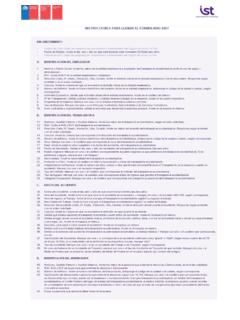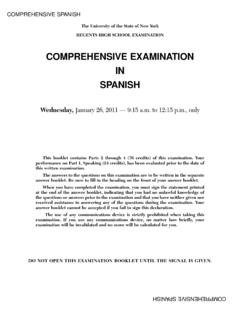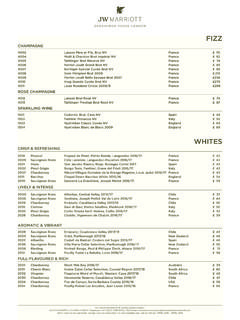Transcription of No. 61 November 2005 Herbs for Upper Respiratory Tract ...
1 Not for Public Distribution. For Education of Health Care Professionals 61 November 2005 Herbs for Upper Respiratory Tract catarrh & InflammationEyebrightThe British Herbal Pharmacopoeia 1983 indicates thatEuphrasia officinalis herb is anticatarrhal and can be usedinternally for nasal catarrh and Eclectic physiciansdescribed Eyebright as an admirable remedy for acutecatarrhal inflammations of the nasal and ocularmembranes, with profuse, watery secretion of mucus. Itwas also recommended for coryza (common cold, rhinitis),mucous ophthalmia, catarrh extending to the ears,hayfever and to both prevent and relieve acute sinusitis. Itwas noted that Eyebright "proved especially useful in theepidemics of la grippe [1918 Spanish influenza].
2 Tocontrol the profuse lachrimation".2 Eyebright (partundefined) was used orally as a prophylactic for 'warm-humour' headache in medieval Persia. (Headache mayresult from alterations in or imbalance of the fourhumours.)3 This may refer to sinus SealHydrastis canadensis root and rhizome has a wide range ofuses in western traditional medicine including upperrespiratory ,4 Golden Seal was recommended bythe Eclectic physicians both topically and internally forcatarrhal pharyngitis, catarrhal sore throat followingtonsillitis, subacute rhinitis, nasopharyngeal catarrh and"when thick gelatinous masses from the pharyngeal vaultconstantly drip into the throat causing hacking cough andnausea". The Eclectic physician Locke advised its use fornasal catarrh with thick, tenacious mucus and almostconstant frontal headache.
3 In all catarrhal conditions of theupper Respiratory Tract , Golden Seal should beadministered for a prolonged period to obtain the RodSolidago virgaurea herb is used in western herbalmedicine for chronic nasopharyngeal catarrh orinflammation and ,5 A contemporary view of theenergetics of Golden Rod indicates that it resolves mucusdamp, restores the mucosa and stops discharge. It isindicated for sinus congestion, allergic rhinitis Americans used Echinacea purpurea root as a coughmedicine and for sore Regarding the medicinal useof Echinacea, E. purpurea does not have the wide varietyof indications that E. angustifolia has, which may be due tothe fact that the eastern tribes who used E. purpurea wereresettled on western reservations (where E.)
4 Angustifoliagrew). Most records of the Native American uses of plantswere made after the purpurea root contains alkylamides,9constituents which have been shown to be immuneenhancing in vivo10 and bioavailable (as evidenced in atrial involving healthy volunteers).11 Oral administration ofEchinacea purpurea root tincture to healthy volunteers for5 days increased the phagocytic activity of granulocytes ina placebo-controlled trial,12 which is part of the front lineof immune is one of the oldest cultivated plants on earth andwas consumed by the indigenous populations of South andCentral America as early as 7000 BC. The plant wasintroduced to Europe and other parts of the worldfollowing the return of Columbus from his exploration Due to its pungency Columbus named Cayennea 'pepper' although it is not related to the Piper of the five domesticated species, Capsicum annuum,C.
5 Frutescens and C. chinense share a mutual ancestralgene pool and belong to the annuum species annuum and C. frutescens have also been usedmedicinally. In western herbal medicine Cayenne has beenused for acute colds, catarrh and sore ,5 As acirculatory stimulant Cayenne will bring improved arterialblood supply and toxin removal to cold, congested orcyanotic Cayenne is used in Mexico as atraditional home remedy for colds, earache and Mapuche of south central Chile used infusion ofCayenne internally to lessen for Public Distribution. For Education of Health Care Professionals FormulationThese Herbs would complement each other in a verypotent formulation with the following actions: anticatarrhal, anti-inflammatory, immune enhancing, tonic to Upper Respiratory Catarrhal and/or inflammatory conditions of the noseor throat eg chronic sinusitis, hayfever, rhinitis,tonsillitis, common cold, sore throat and otitis and ContraindicationsEchinacea is contraindicated in patients takingimmunosuppressant medication (eg transplant patients).
6 Short-term therapy only is suggested in this instance. Usewith caution in the first trimester of pregnancy, due to thepresence of Golden Seal. Caution in those takingtheophylline as Cayenne may increase its absorption andbioavailability. Cayenne may interact with ACE inhibitors(theoretical concern).REFERENCES1 British Herbal Pharmacopoeia. BHMA, Bournemouth, 1983. 2 Felter Eclectic Materia Medica, Pharmacology and Therapeutics. Firstpublished 1922, reprinted Eclectic Medical Publications, Portland, 1983. 3 Gorji A, Khaleghi Ghadiri M. Lancet Neurol 2002; 1: 510 4 British HerbalCompendium. BHMA, Bournemouth, 1992. 5 Felter HW, Lloyd JU. King sAmerican Dispensatory. 18th Edn, 3rd revision. First published 1905,reprinted Eclectic Medical Publications, Portland, 1983.
7 6 Holmes P. TheEnergetics of Western Herbs : Treatment Strategies Integrating Westernand Oriental Herbal Medicine. Revised 3rd Edn. Snow Lotus Press,Boulder, 1998. 7 Flannery MA. Pharm Hist 1999; 41: 52 8 Bergner P. TheHealing Power of Echinacea, Goldenseal, and Other Immune SystemHerbs. Prima Publishing, Rocklin, 1997. 9 ESCOP Monographs: TheScientific Foundation for Herbal Medicinal Products, 2nd Edn. ESCOP,European Scientific Cooperative on Phytotherapy, Exeter, 2003. 10 WagnerH (ed). Immunomodulatory Agents from Plants. Birkauser Verlag, Basel,1999. 11 Matthias A et al. Life Sci 2005; 77: 2018 12 Jurcic K et al. ZPhytother 1989; 10: 67 13 Palevitch D, Craker LE. Herb Spice MedicinalPlant Dig 1993; 11: 1 14 Nagy N et al. Agric Sci 2004/2005; 17: 12 15 MillsSY.
8 Out of the Earth: The Essential Book of Herbal Medicine. Viking Arkana(Penguin), London, 1991. 16 Sandoval A. Homegrown Healing: TraditionalHome Remedies from Mexico. Berkley Books, New York, 1998. 17 Houghton PJ, Manby J. J Ethnopharmacol 1985; 13: 89 Author: Michelle Morgan Copyright 2005 MediHerb Pty Ltd.












